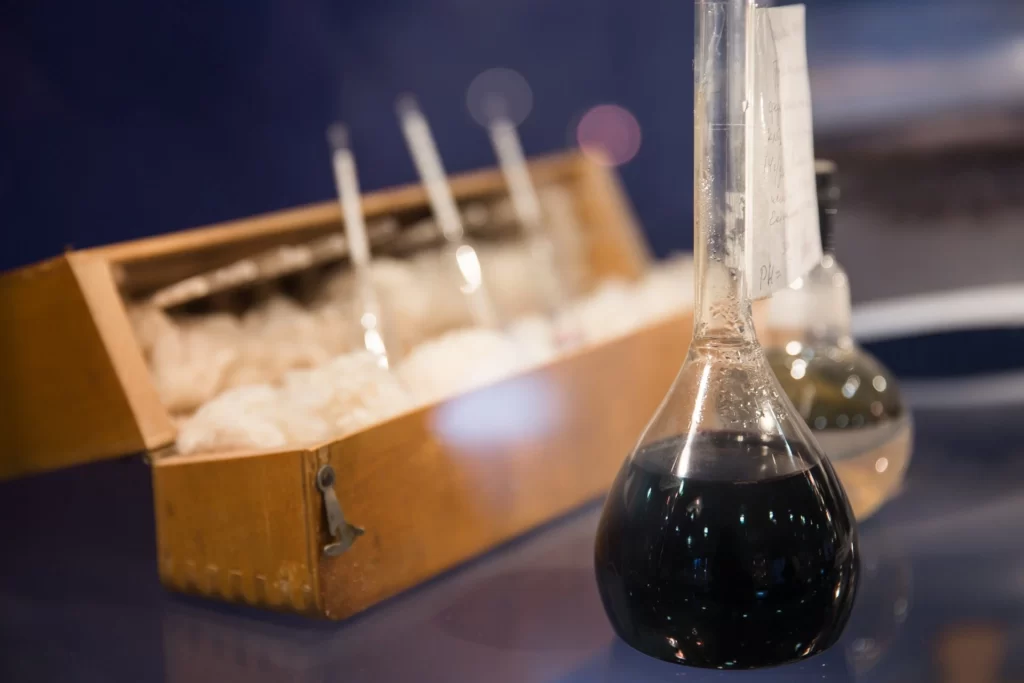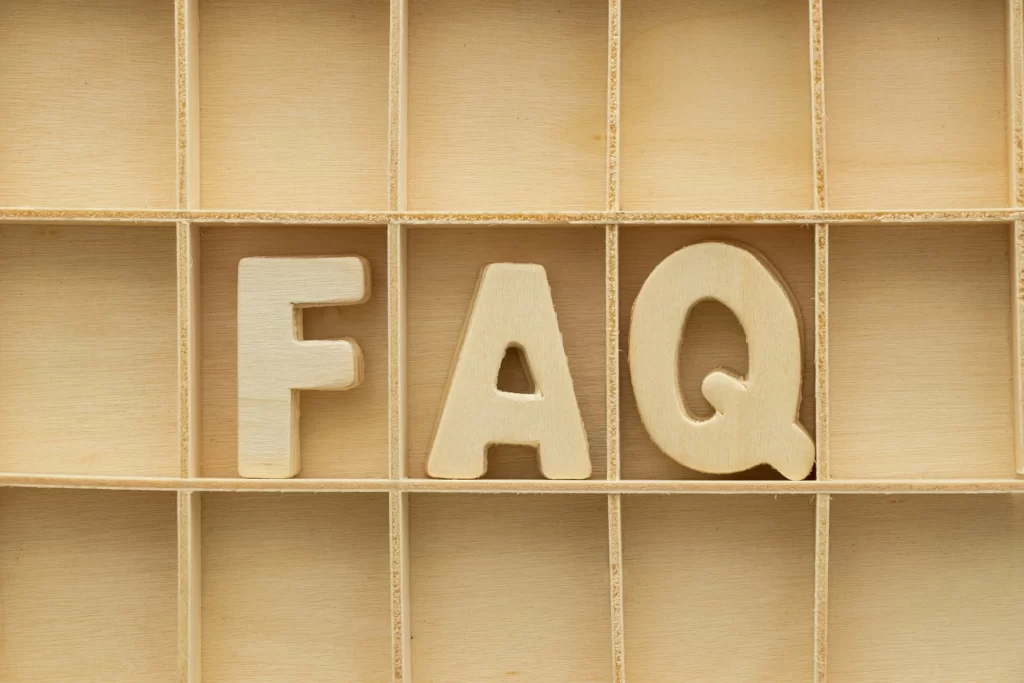Introduction to Round Bottom Flasks
Round-bottom flasks are indispensable tools in the field of laboratory glassware, serving a wide range of scientific experiments. These pear-shaped vessels, typically made of high-quality borosilicate glass, are essential for their ability to withstand high temperatures and facilitate efficient heating and stirring of liquids. The unique design of round-bottom flasks, featuring a rounded base and a long neck, ensures uniform heat distribution and optimal blending during various chemical reactions. This article will provide an in-depth examination of round-bottom flasks, including their structure, applications, proper handling techniques, and more.

The Anatomy of a Round Bottom Flask
A round bottom flask comprises several key components that contribute to its functionality and durability. The main body, or bulb, of the flask, features a rounded bottom, which promotes efficient heat transfer and prevents liquid pooling. The long neck, often fitted with a ground glass joint, facilitates secure connections with other apparatus, such as condensers, thermometers, or stoppers. The opening of the flask is typically narrower to prevent the escape of vapors during heating or distillation. Borosilicate glass, known for its resistance to thermal stress and chemical corrosion, is the material of choice for manufacturing round-bottom flasks.

Importance of Round Bottom Flasks in Laboratory Experiments
Round-bottom flasks play a pivotal role in laboratory experiments due to their versatility and reliability. These flasks are widely used in various scientific disciplines, including chemistry, biology, and pharmaceutical research. Their importance stems from their ability to withstand high temperatures and facilitate efficient heating, boiling, and mixing of liquids.
The unique shape of round bottom flasks promotes even heat distribution, making them ideal for reactions that require uniform heating. The rounded bottom ensures that the liquid inside the flask is in constant motion, allowing for better mixing and preventing hot spots that could lead to uneven reactions.
Moreover, round-bottom flasks offer several advantages over other types of glassware. Their design allows for easy swirling and stirring of liquids, enabling efficient mixing of reagents. The long neck provides a secure attachment point for various accessories and allows for the setup of complex experimental apparatus.

Common Applications and Uses of Round Bottom Flasks
Round-bottom flasks find applications in a wide range of laboratory procedures. Some of the common uses include:
- Heating and boiling liquids: Round bottom flasks are ideal for heating liquids due to their ability to withstand high temperatures. They are commonly used in procedures such as reflux, where the liquid is heated and condensed before returning to the flask.
- Fractional distillation and reflux: The long neck of the round bottom flask allows for the attachment of condensers, enabling fractional distillation and reflux processes. These techniques are essential for separating and purifying liquid mixtures.
- Solvent evaporation and concentration: Round-bottom flasks are frequently used for evaporating solvents and concentrating solutions. The large surface area of the liquid exposed to heat facilitates rapid evaporation.
- Reactions under inert conditions: Round bottom flasks can be used to carry out reactions under inert atmospheres, such as nitrogen or argon. The flask’s shape and tight-sealing connections ensure that the reactants are protected from air and moisture.
These mentioned instances are merely a small glimpse into the wide-ranging applications of round-bottom flasks within laboratory environments. The versatility and dependability of these flasks establish them as crucial instruments for scientists and researchers.

Handling and Care: Best Practices for Round Bottom Flask Usage
Proper handling and care of round bottom flasks are crucial for their longevity and safe usage. Here are some best practices to keep in mind:
- Proper handling techniques: When handling a round bottom flask, ensure a firm grip around the neck rather than the bulb to prevent accidents or breakage. Avoid applying excessive force or sudden impacts.
- Temperature limitations and precautions: Be aware of the temperature limitations of the flask and the specific experiments you are conducting. Sudden temperature changes or extremes can cause thermal shock and lead to flask breakage. Gradually heat or cool the flask to avoid thermal stress.
- Avoiding thermal shock and breakage: To prevent thermal shock, ensure the flask is free from cracks or chips. Do not subject a cold flask to direct heat, and vice versa. Use appropriate heating and cooling methods, such as water baths or heating mantles.
- Understanding weight limitations: Consider the weight of the contents when using round bottom flasks. Avoid overloading the flask, as excessive weight can compromise the flask’s integrity.
- Protective measures: Wear appropriate personal protective equipment (PPE) when working with round bottom flasks, including gloves, safety glasses, and a lab coat. Use a fume hood or work in a well-ventilated area when dealing with volatile or hazardous substances.
By following these best practices, you can ensure the safe and effective use of round-bottom flasks in your laboratory experiments.

Understanding Round Bottom Flask Accessories and Attachments
To enhance the functionality and versatility of round bottom flasks, various accessories, and attachments can be utilized. These additions allow for more precise control over experiments and enable the setup of complex apparatus. Here are some commonly used round-bottom flask accessories:
- Thermometers, condensers, and stir bars: Thermometers are essential for monitoring and controlling the temperature inside the flask. Condensers aid in the cooling and condensation of vapors, while stirring bars facilitate efficient mixing and stirring of the contents.
- Clamps stand, and heating mantles: Clamps and stands to provide stability and support for round bottom flasks during heating or when connected to other apparatus. Heating mantles are used to evenly distribute heat around the flask, ensuring uniform heating.
- Adapters and connectors for setups: Various adapters and connectors can be attached to the round bottom flask to create specialized setups. For example, addition funnels and stopcocks allow for controlled additions of reagents, while vacuum or gas inlet/outlet modifications enable specific reactions under controlled atmospheres.
The availability of these accessories and attachments expands the range of experiments that can be performed using round bottom flasks. They offer greater control, precision, and flexibility, empowering researchers to tailor their setups according to their specific experimental requirements.

Exploring Round Bottom Flask Modifications for Specialized Purposes
Round bottom flasks can be modified to meet specialized needs and accommodate unique experimental setups. These modifications enhance the flask’s functionality and expand its applications. Here are a few examples of round-bottom flask modifications:
- Multiple necks and sidearms for parallel reactions: Some round bottom flasks are designed with multiple necks or sidearms, allowing for simultaneous or parallel reactions. This feature is especially useful when conducting multiple reactions simultaneously or when performing reactions that require separate additions or separations.
- Addition funnels and stopcocks for controlled additions: Addition funnels and stopcocks can be incorporated into round bottom flasks to provide controlled additions of reagents. This modification allows for the precise and gradual addition of substances during reactions.
- Vacuum and gas inlet/outlet modifications: Round bottom flasks can be equipped with specialized modifications for vacuum or gas applications. These modifications enable researchers to perform reactions under specific pressures or atmospheres, such as vacuum distillation or inert gas reactions.
By exploring these modifications, scientists can adapt round-bottom flasks to their specific research needs and create customized setups that optimize experimental efficiency and precision.

Safety Measures and Precautions for Round Bottom Flask Handling
When working with round bottom flasks, it’s crucial to prioritize safety to prevent accidents and ensure the well-being of laboratory personnel. Here are some safety measures and precautions to follow:
- Protective equipment and clothing: It is essential to always wear the necessary personal protective equipment (PPE) when working in a laboratory. This includes wearing gloves, safety glasses, and a lab coat. PPE serves as a vital safeguard against potential hazards such as chemical splashes and broken glass.
- Ventilation and fume hoods: Perform experiments in a well-ventilated area or under a fume hood to minimize exposure to vapors, gases, and fumes. Proper ventilation helps maintain a safe working environment.
- Dealing with pressure buildup and potential hazards: Some reactions in round bottom flasks can generate pressure or release gases. It’s important to understand the potential hazards associated with the reaction and take appropriate precautions, such as using pressure relief devices or venting systems.
- Avoiding direct heat sources: When heating a round bottom flask, avoid direct contact with open flames or high-intensity heat sources. Instead, use heating mantles or water baths to provide indirect and controlled heating.
- Proper disposal of broken flasks: If a round-bottom flask happens to break, it is crucial to handle the shattered glass with care. Dispose of the broken glass in designated sharps containers to prevent any potential injuries. Additionally, it is important to adhere to proper waste disposal procedures for hazardous or contaminated materials. Following these safety measures and precautions ensures a safe laboratory environment and reduces the chances of accidents or injuries when working with round-bottom flasks.

Cleaning and Maintenance Guide for Round Bottom Flasks
Proper cleaning and maintenance of round bottom flasks are essential for their longevity and reliable performance. Here are some guidelines to keep in mind:
- Removal of stubborn residues: After each use, rinse the flask with an appropriate solvent or detergent to remove any residue or contaminants. For stubborn residues, soak the flask in a cleaning solution or use specialized cleaning agents designed for glassware.
- Proper drying and storage: To avoid the growth of mold and the formation of water spots, it is crucial to thoroughly dry the flask after cleaning. It is important to make sure the flask is completely dry before storing it. Store round-bottom flasks in a clean and dry area, keeping them away from direct sunlight and extreme temperatures. By following these guidelines, you can preserve the flask’s integrity, minimize the risk of damage, and prevent any potential deterioration.
- Inspection for cracks and damage: Regularly inspect round bottom flasks for any signs of cracks, chips, or damage. If any defects are detected, avoid using the flask and replace it with a new one to maintain the integrity and safety of your experiments.
By following these cleaning and maintenance practices, you can prolong the lifespan of your round bottom flasks and ensure their optimal performance in the laboratory.

Conclusion: Embracing the Limitless Potential of Round Bottom Flasks
Round-bottom flasks have become an indispensable tool in laboratory experiments due to their unique design and versatility. Their ability to withstand high temperatures, facilitate efficient heating and mixing, and accommodate various accessories and modifications make them an essential asset for scientists and researchers.
From heating and distillation to reactions under controlled atmospheres, round-bottom flasks find applications across diverse scientific disciplines. By embracing the limitless potential of round-bottom flasks, researchers can unlock new possibilities and explore the frontiers of scientific discovery.
So, next time you step into the laboratory, remember the secrets held within the pear-shaped round bottom flask. Its shape, materials, and attachments are your allies in the quest for knowledge and innovation.

FAQs (Frequently Asked Questions)
Q: Can I use a round bottom flask for high-pressure reactions?
A: Round bottom flasks are not designed for high-pressure reactions. It’s important to use appropriate pressure-rated glassware for such experiments.
Q: Are round bottom flasks suitable for use with corrosive chemicals?
A: Round bottom flasks made of borosilicate glass exhibit good resistance to most corrosive chemicals. However, always check the compatibility of the flask with the specific chemical before use.
Q: Can round bottom flasks be used with magnetic stirrers?
A: Yes, round-bottom flasks can be used with magnetic stirrers. Simply place a magnetic stir bar inside the flask, and it will rotate and stir the contents when placed on the magnetic stirrer.
Q: What is the maximum temperature a round bottom flask can withstand?
A: The maximum temperature a round bottom flask can withstand depends on the specific type and quality of the glass used. Borosilicate glass flasks typically have high-temperature resistance, up to around 500°C (932°F).

Q: How should I dispose of broken round bottom flasks?
A: Broken round bottom flasks should be disposed of in designated sharps containers. Follow proper waste disposal protocols and consult with your institution’s guidelines for safe disposal practices.
Q: Can I use a round bottom flask directly on a hotplate?
A: It is not recommended to place a round bottom flask directly on a hotplate. The uneven surface of the hotplate can cause stress points and increase the risk of flask breakage. It is best to use a heating mantle or a water bath for controlled heating.
Q: Are round-bottom flasks microwave-safe?
A: Round bottom flasks made of borosilicate glass are generally microwave-safe. However, it is important to check the manufacturer’s specifications to ensure compatibility with microwave use.
Q: Can I use a round bottom flask for vacuum filtration?
A: Round bottom flasks are not typically designed for vacuum filtration due to their shape. It is more suitable to use a separate filtration apparatus such as a Buchner funnel and flask setup.

Q: Are there disposable round-bottom flasks available?
A: Round-bottom flasks are generally designed for multiple uses and are not commonly available as disposable items. However, there are disposable alternatives such as plastic Erlenmeyer flasks that can be used for specific applications.
Q: What is the difference between a round bottom flask and a boiling flask?
A: Round bottom flasks have a spherical shape with a rounded bottom while boiling flasks have a flat or slightly conical bottom. Boiling flasks are typically used for boiling or heating liquids, while round bottom flasks are more versatile and allow for efficient mixing and stirring.
Q: Can I use a round bottom flask for storing chemicals long-term?
A: Round-bottom flasks are not intended for long-term chemical storage. They are primarily designed for experimental procedures and should be used for their intended purpose. Proper chemical storage containers should be used for long-term storage.
Q: What is the maximum volume a round bottom flask can hold?
A: The maximum volume of a round-bottom flask is determined by its size and design, which can vary significantly. These flasks are manufactured in a wide range of sizes, spanning from a few milliliters to several liters. This variety allows researchers and scientists to choose the appropriate flask size based on their specific experimental requirements. The flexibility in volume options ensures that round-bottom flasks can accommodate various quantities of liquids or substances, making them versatile tools in laboratory settings.

Q: Can I use a round bottom flask with a hot air oven?
A: Round bottom flasks should not be used directly in a hot air oven. The circulating hot air may cause uneven heating and increase the risk of flask breakage. Use appropriate oven-safe glassware for oven applications.
Q: Are round-bottom flasks suitable for cryogenic applications?
A: Round-bottom flasks are not recommended for cryogenic applications due to the risk of thermal stress from extreme temperature changes. Specialized cryogenic glassware should be used for low-temperature experiments.
Q: Can I autoclave a round bottom flask?
A: Round bottom flasks made of borosilicate glass can generally withstand autoclaving. However, it is essential to check the manufacturer’s guidelines and ensure the flask is properly supported and vented during the autoclaving process.
Q: Can I use a round bottom flask for ultrasonic cleaning?
A: Round bottom flasks can be used for ultrasonic cleaning to remove residues or contaminants. Ensure the flask is properly secured and supported within the ultrasonic bath to prevent breakage.

Q: Can I use a round bottom flask for storage in a freezer?
A: Round-bottom flasks can be used for short-term storage in a freezer for certain applications. However, extreme temperature fluctuations can cause stress on the glass, so it’s important to use appropriate freezer-safe glassware for long-term storage.
Q: Can I use a round bottom flask for gas reactions?
A: Round bottom flasks can be used for gas reactions with proper modifications such as gas inlet/outlet attachments. These modifications ensure controlled gas flow and allow for reactions under specific gas atmospheres.
Q: Can I use a round bottom flask for fractional distillation?
A: Yes, round-bottom flasks are commonly used for fractional distillation. The shape of the flask allows for efficient vaporization and condensation, making it suitable for separating volatile components based on their boiling points.
Q: Are round bottom flasks compatible with magnetic hotplate stirrers?
A: Round bottom flasks are compatible with magnetic hotplate stirrers. The stir bar placed inside the flask can be rotated using the magnetic field generated by the hotplate stirrer, enabling effective mixing and stirring.

Q: Can I use a round bottom flask for refluxing reactions?
A: Round-bottom flasks are frequently used for refluxing reactions. The round shape, along with the addition of a condenser, allows for continuous vaporization and condensation of the reactants, enabling refluxing and prolonged reaction times.
Q: Can I connect multiple round bottom flasks together?
A: Multiple round bottom flasks can be connected together using appropriate adapters and connectors. This setup is useful for parallel reactions, multi-step syntheses, or when additional capacity is required.
Q: How do I prevent round bottom flask breakage during cooling?
A: To prevent round bottom flask breakage during cooling, it is important to avoid rapid temperature changes. Gradually cool the flask by placing it on a heat-resistant surface or in a water bath to allow for gradual thermal equilibration.
Q: Can I use a round bottom flask for rotary evaporation?
A: Round-bottom flasks are commonly used in rotary evaporation setups. The flask is connected to a rotary evaporator, allowing for efficient evaporation and concentration of solvents under reduced pressure and controlled temperature.

Q: What should I do if my round bottom flask develops a crack?
A: If a round bottom flask develops a crack, it should no longer be used for experiments. Dispose of the cracked flask safely and replace it with a new one to ensure the integrity of your experiments and safety in the laboratory.
Q: Can I use a round bottom flask for pH-sensitive reactions?
A: Round bottom flasks made of glass are generally suitable for pH-sensitive reactions. However, it is important to ensure the compatibility of the flask with the specific chemicals and pH ranges involved in the reaction.
Q: Can I use a round bottom flask for microwave-assisted synthesis?
A: Round-bottom flasks made from borosilicate glass are well-suited for microwave-assisted synthesis. However, ensuring safety is paramount, and it is crucial to follow the manufacturer’s instructions and use microwave-transparent accessories. By adhering to the recommended guidelines and employing the appropriate equipment, researchers can fully exploit the advantages of microwave-assisted synthesis, conducting reactions efficiently and securely in the controlled environment of the laboratory.

Q: Can I attach a reflux condenser to a round bottom flask?
A: Yes, a reflux condenser can be attached to a round bottom flask. The condenser enables the collection and return of vaporized reactants, allowing for refluxing and extended reaction times.
Q: Are round-bottom flasks suitable for vacuum distillation?
A: Round-bottom flasks are commonly used for vacuum distillation. The flask’s shape and sturdy design, along with the addition of a vacuum adapter, allow for the efficient removal of volatile components under reduced pressure.
Q: Can I use a round bottom flask for solid-phase reactions?
A: Round bottom flasks are typically used for liquid-phase reactions. For solid-phase reactions, it is recommended to use appropriate glassware such as reaction vessels or crucibles specifically designed for solid-phase synthesis.

